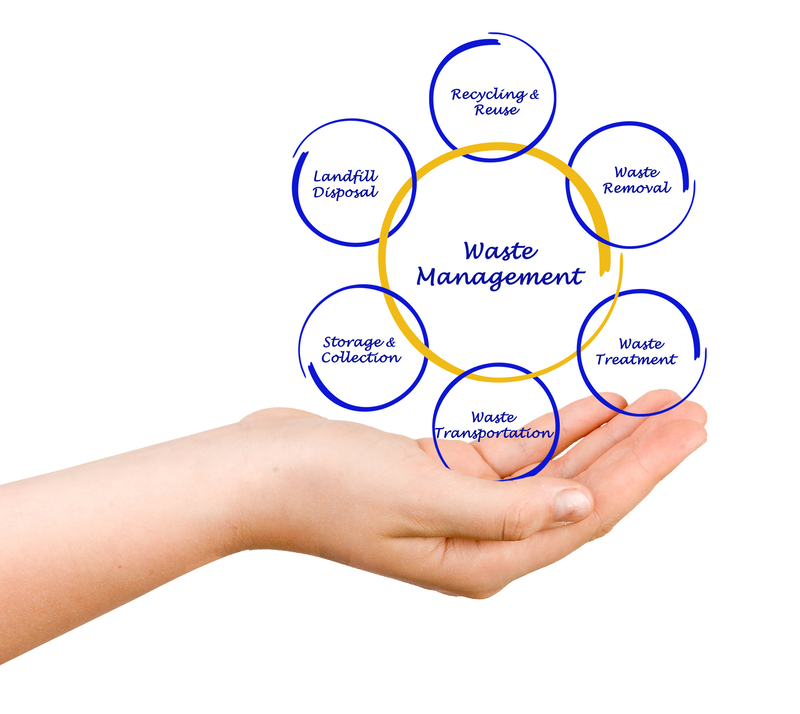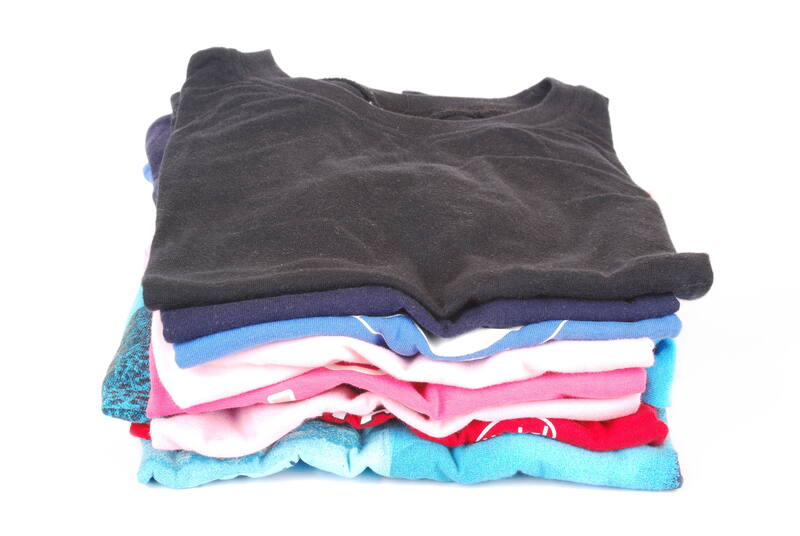Tactics for a Waste-Free Household Environment
In today's eco-conscious era, striving towards a waste-free household environment has become more than a trend--it's an essential lifestyle choice for sustainable living. The good news is that anyone can make significant strides toward zero waste at home by adopting intentional habits, mindful consumption, and efficient systems. In this comprehensive article, we'll explore practical tactics for a waste-free household environment, offering actionable advice and creative inspiration for every room in your house.

Why Aim for a Waste-Free Household?
- Reduces your environmental impact
- Saves money through conscious consumption
- Creates a healthier home environment
- Encourages mindful buying and better quality items
- Promotes responsibility and environmental education for children
By minimizing waste, you also conserve resources, energy, and landfill space while empowering your family to make choices that benefit the planet. Achieving a waste-free home is a journey that begins with awareness, followed by thoughtful action. Let's dive into the best tactics for minimizing household waste and transitioning toward a waste-free lifestyle.
Understanding Household Waste
Before tackling your waste-free household goals, it's helpful to understand where and how waste accumulates. The main categories of household waste include:
- Food scraps and leftovers
- Packaging (plastic, cardboard, glass, cans)
- Paper (mail, newspapers, receipts)
- Single-use items (bottles, utensils, straws)
- Textiles (clothing, towels, bedding)
- Electronics and batteries
- Cleaning and personal care products
Identifying your household's waste patterns is the crucial first step towards zero waste living.
The Waste-Free Hierarchy: Refuse, Reduce, Reuse, Recycle, Rot
Transitioning to an eco-friendly and waste-free household is best approached using the "5 Rs" hierarchy:
- Refuse what you don't need
- Reduce what you do need
- Reuse by finding alternatives to single-use items
- Recycle what can't be refused, reduced, or reused
- Rot (compost) the rest
Let's break down waste-free living strategies according to this framework.
Refuse: Say No to Unnecessary Waste
1. Decline Freebies
Whether it's plastic cutlery with your takeout, promotional items, or flyers, refusing unwanted items can drastically cut clutter and waste. Be polite but firm when offered disposable products or giveaways you don't need.
2. Avoid Single-Use Plastics
Say no to plastic bags, straws, disposable cups, and bottled water. Invest in quality, reusable versions--like a stainless steel bottle or canvas tote bag--and keep them handy each time you leave the house.
Reduce: Minimize What You Bring In
3. Shop with Intention
- Plan grocery trips using a list to avoid impulse buys and food waste.
- Buy in bulk when possible, using your own containers for grains, nuts, and spices.
- Purchase products with minimal or compostable packaging.
4. Choose Durable, Quality Goods
Investing in long-lasting products means fewer replacements and less waste in the long run. Opt for items made from metal, glass, wood, or bamboo instead of plastic.
5. Embrace Minimalism
- Practice mindful purchasing by asking, "Do I really need this?" before buying.
- Declutter regularly, donating usable items to local charities.
- Decorate and furnish your home with multi-functional pieces.
Reuse: Give Items a Second Life
6. Opt for Reusables in the Kitchen
- Swap paper towels for washable cloth rags.
- Use glass containers for leftovers instead of plastic wrap.
- Choose silicone baking mats instead of parchment paper.
- Bring your own coffee mug or thermos on the go.
7. Repurpose and Upcycle Creativity
Get creative with jars, boxes, and fabric scraps. Old T-shirts become cleaning rags, glass jars store pantry staples, and crates can be used for organizing or DIY projects.
8. Borrow and Share
- Join a local tool library or share infrequently used items with neighbors.
- Borrow books or media from your public library instead of buying new.
Recycle: Manage Unavoidable Waste Responsibly
9. Sort and Recycle Correctly
- Learn your community's recycling codes and guidelines for plastics, paper, and metals.
- Rinse containers before recycling to prevent contamination.
- Know how to dispose of batteries, electronics, and hazardous waste correctly.
10. Support Closed-Loop Systems
When purchasing packaged goods, choose brands that use recyclable, compostable, or reusable packaging and participate in take-back programs for containers or electronics.
Rot: Composting for Waste-Free Living
Food scraps make up a large portion of household waste but are easy to divert from landfill through composting. This not only reduces methane emissions but also creates nutrient-rich soil for gardening.
11. Start a Home Composting System
- Compost bins can be used outdoors or even under the kitchen sink for small apartments.
- Add food scraps, coffee grounds, eggshells, and yard waste, and avoid meat, dairy, and oils.
- Use the finished compost to nourish houseplants or gardens.
Waste-Free Tactics for Each Room
To achieve a zero waste household, address waste generation in every room. Here are some room-by-room strategies for making your home truly waste-free.
Kitchen
- Use a shopping list and meal plan to reduce food waste.
- Avoid pre-packaged produce and bring your own bags to the grocery store.
- Store food in reusable containers and freeze leftovers.
- Try bulk shopping stores and refill stations for pantry staples and cleaning supplies.
Bathroom
- Switch to bar soap, shampoo bars, and refillable liquid products.
- Choose bamboo toothbrushes and reusable cotton rounds.
- Use washable menstrual products or organic cotton options.
Laundry and Cleaning
- Make your own cleaning solutions with vinegar, baking soda, and lemon.
- Replace disposable dryer sheets with wool balls.
- Launder with full loads to save energy and water.
- Invest in reusable mop pads and cleaning cloths.
Living Room
- Minimize decor items and choose multi-functional furniture.
- Buy second-hand or vintage whenever possible.
- Streamline electronics and ensure proper e-waste recycling.
Bedroom
- Donate unworn clothes or host a clothing swap.
- Choose natural fiber bedding and sleepwear.
- Repurpose old sheets into rags or gift wraps.
Smart Shopping and Waste Prevention
12. Choose Packaging-Free and Refillable Products
Seek out stores that offer bulk bins or refillable containers for pantry goods, cleaning products, and beauty items. This reduces packaging waste and often saves money.
13. Buy in Bulk or Concentrated Formulas
- Use bulk stores for dry goods, spices, and even soaps.
- Select concentrated cleaners and personal care products that require less packaging and last longer.
14. Prioritize Repair Over Replacement
- Learn basic repair skills or find local repair cafes.
- Mend clothing, fix appliances, and upcycle before discarding.
15. Opt for Digital Alternatives
- Go paperless with bills, magazines, and recipes.
- Utilize note-taking apps and digital planners to cut paper use.
Waste-Free Household Mindset and Habits
16. Engage the Whole Family
- Educate and motivate children and all household members about sustainable practices.
- Make waste reduction a fun challenge with monthly goals and rewards.
- Lead by example to inspire others in your community.
17. Develop New Routines
- Set up designated recycling, compost, and donation centers for easy sorting.
- Regularly audit trash bins to identify waste reduction opportunities.
Additional Tips for a Waste-Free Household Environment
- Incorporate plants to purify the air and support composting efforts with natural fertilizer.
- Use newspaper or old jars for gift wrap instead of store-bought materials.
- Switch to digital receipts wherever possible to reduce paper waste.
- Support local markets and small producers who use less packaging.

The Benefits of Creating a Waste-Free Home
Embracing these tactics for a waste-free household environment not only shrinks your carbon footprint, but it also:
- Leads to lower grocery and household costs
- Results in a cleaner, healthier home space
- Instills a sense of accomplishment and leadership in sustainability
- Sets a valuable example for your children and community
Conclusion: Progress Over Perfection
Remember, achieving a completely waste-free household is a long-term goal and can take time. Start small--choose a single category to improve, such as reducing kitchen waste or swapping out bathroom disposables. Celebrate every victory and keep learning and adapting as you go.
A waste-free household environment doesn't mean inconvenience--it means aligning your daily habits with your values. By implementing these strategies, not only will you lighten your ecological footprint, but you'll also enjoy a more organized, peaceful, and fulfilling home. The journey to zero waste is as important as the destination; every step counts toward a cleaner, greener future.